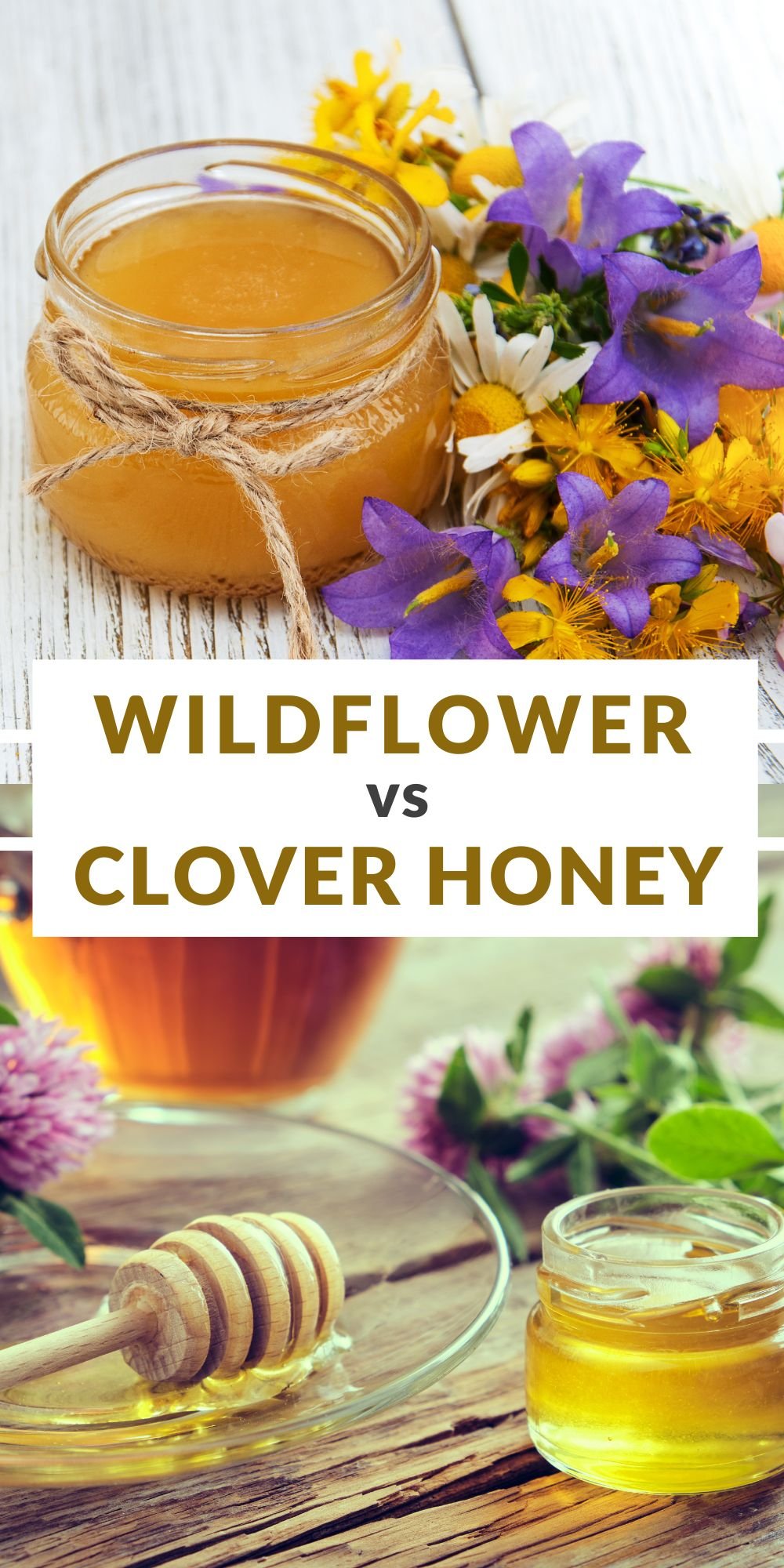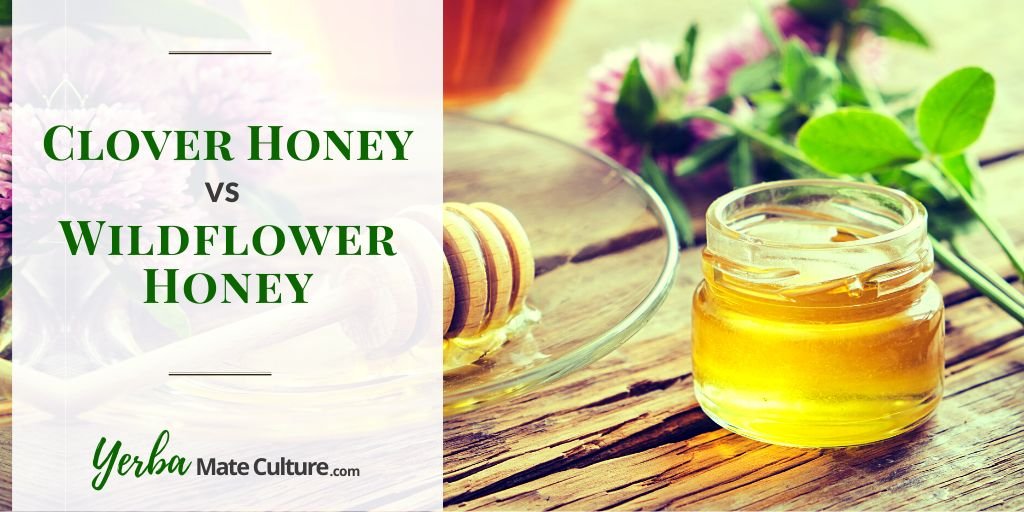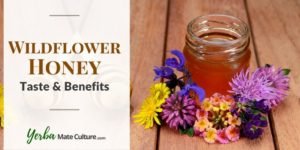When it comes to selecting the perfect honey, you might be overwhelmed by the variety of choices available.
Two popular types of honey that you might come across are wildflower honey and clover honey. Each type has its distinct characteristics, flavor profiles, and potential health benefits.
But how exactly do they differ, and which one should you choose for your needs?
Wildflower honey, as the name suggests, is a multifloral honey made by bees that collect the nectar of various wildflowers. Clover honey is a monofloral honey made by bees that predominantly collect the nectar of clovers.
The flavors of these honeys can vary greatly due to the different flowers the bees visit. For instance, wildflower honey tends to have a more robust taste, whereas clover honey has a milder and sweeter flavor.
As you explore these two types of honey, pay attention to their color and texture differences, as well as their possible health benefits. Remember that the ultimate choice between wildflower and clover honey largely depends on your personal preference and intended use.
Below is a table that summarizes the differences between wildflower and clover honey:
| Honey | Wildflower | Clover |
|---|---|---|
| Type | Multifloral | Monofloral |
| Flavor | Complex, Ligh & Fruity | Mild & Delicate |
| Color | Varies according to season | Light |
Wildflower Honey vs Clover Honey: Origins
Sources of Wildflower Honey
Wildflower honey is a multifloral honey, which means it is made from the nectar of different types of wildflowers. This type of honey varies in color and taste, depending on the specific wildflowers the bees visited.
To produce wildflower honey the beehives are placed in an area with a diverse variety of wildflowers. The result is a wide range of flavors, colors, and compositions for the final product, which can vary significantly between batches due to the different flowers in bloom.
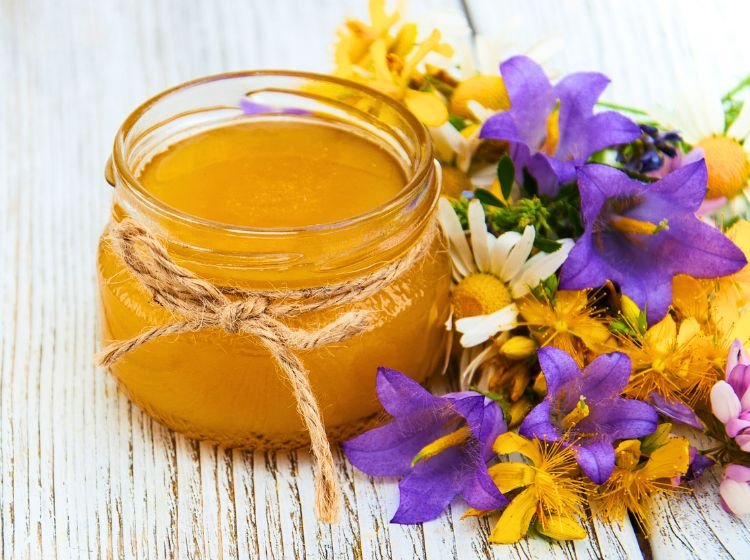
The honey’s characteristics are also influenced by factors such as weather and the region where it’s produced.
This makes wildflower honey an ever-evolving and unique experience. Some wildflower honeys may have a more robust flavor, while others can be lighter and more floral.
Sources of Clover Honey
Clover honey is a monofloral honey predominantly made from the nectar of clovers. It is the most popular type of honey in the United States because clovers are very widespread and bees prefer them as a food source.
This type of honey is milder in flavor compared to wildflower honey, which makes it a versatile and widely accepted option for different tastes and culinary applications.
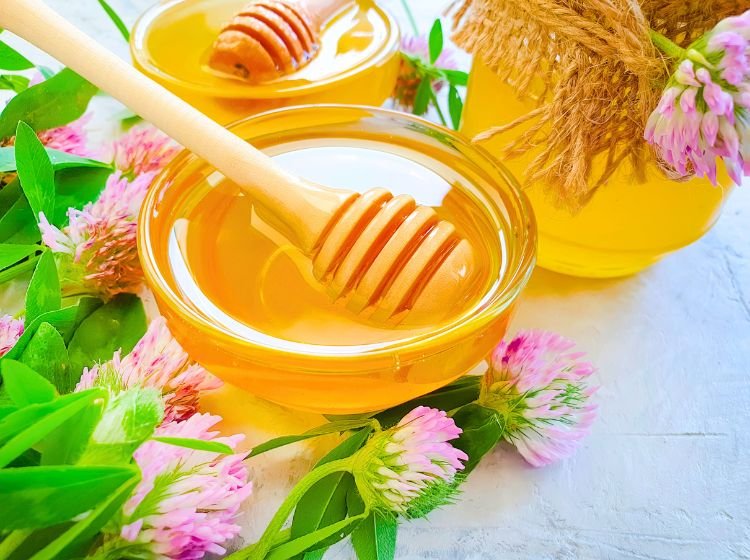
In general, clover honey has a lighter color than wildflower honey. Its consistency and flavor profile can also slightly vary depending on factors such as the specific clover species and the region where it is produced.
Wildflower Honey vs Clover Honey: Taste Profiles
Wildflower Honey Taste
Wildflower honey typically has a light state with fruity and floral notes. Its taste is more complex and varied compared to clover honey.
This is because wildflower honey is derived from various plants including clover, poppy, bee balm, bellflower, baby blue eyes, lady’s bedstraw, blackeyed Susan, and purple coneflower.
Due to the diverse range of nectar sources, the flavor of wildflower honey changes depending on the region and the flowers visited by the bees that produced it.
One of the aspects you might appreciate about wildflower honey is its varying flavor profile. This makes it an exciting option that always offers surprises for those seeking a taste that’s more adventurous than the mildness of clover honey.
Clover Honey Taste
Clover honey offers a milder and more consistent taste because it originates primarily from the nectar of clover plants, which creates a more uniform and less complex flavor.
However, there are dozens, if not hundreds, of species of clover that vary according to different regions. So there is also some variation in the taste of different brands of clover honey.
With its floral aftertaste, clover honey can be an excellent choice if you prefer something gentler on your taste buds.
In terms of appearance, clover honey tends to be lighter in color and has a more vivid orange hue. Its mild flavor is one of the reasons why clover honey is common and widely enjoyed. It’s a versatile option that many people can agree on, making it a safe choice for various culinary applications.
Health Benefits of Wildflower and Clover Honey
The health benefits of wildflower honey and clover honey are very similar. The main benefits are related to the nutrition and antioxidants that both types of honey contain.
1. Nutritional Content
Nutrition in wildflower honey and clover honey is very similar. Both types of honey provide a natural source of energy and are rich in vitamins, minerals, and enzymes.
They can be used as a natural sweetener in your diet, providing a healthier alternative to processed sugar.
Just remember to buy raw honey instead of processed ones. The processing often eliminates the beneficial compounds while the raw honey retains more enzymes, vitamins, minerals, and antioxidants.
2. Antioxidants
One key difference between wildflower honey and clover honey is their antioxidant content. Both types of honey contain antioxidants, which can help protect your cells from damage caused by free radicals.
Antioxidants assist in maintaining a healthy immune system and can contribute to better overall health. Although their antioxidant content is quite similar, the actual variety of antioxidants may differ due to the different plants and flowers the bees visit to collect nectar.
The antioxidants of honey make it a great natural remedy for suppressing cough and other symptoms of the common cold. It also provides relief from pain and soreness by coating the throat.
In addition, the natural prebiotics found in raw honey encourages the growth of good bacteria in the gut. This helps to support a healthy digestive system and prevent problems like stomach pain and diarrhea.
If you are looking for the ultimate health benefits, check out this guide with the best manuka honey brands.
Culinary Uses of Wildflower and Clover Honey
Wildflower Honey in Foods and Drinks
The complex flavor profile of wildflower honey makes it versatile in the kitchen. You can use it as a natural sweetener, in place of sugar or other sweeteners, for a more nuanced and natural taste.
Try it in your favorite baked goods, as a drizzle on top of pancakes, waffles, or oatmeal, or even in dressings and marinades to add natural sweetness with depth.
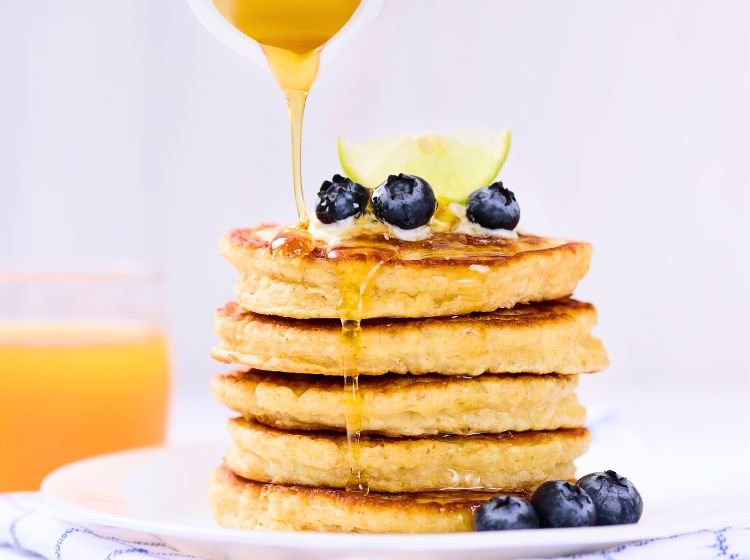
In addition to sweetening recipes, wildflower honey can also play a role in balancing flavors. Use it to tame acidity in salad dressings, bring out the natural sweetness in fruits and vegetables, or enhance the flavor of savory dishes like roasted meats and vegetables.
Its rich taste can also complement cheese boards or charcuterie platters, offering a sweet contrast to the salty and sharp flavors.
And don’t forget to explore sweetening beverages with wildflower honey!
It can be used to sweeten tea, cocktails, or even homemade lemonade. Its multifaceted flavor pairs well with a variety of drink options, adding a touch of natural sweetness without overpowering the other flavors in your drink.
Clover Honey in Foods and Drinks
Clover honey is known for its mild flavor and light color which makes it an ideal choice when you want the sweetness of honey without the more intense flavor notes of wildflower honey.
It’s an excellent option for recipes where you want the honey to simply sweeten without imparting too much of its own flavor.
Within baking, clover honey works well in delicate pastries, cakes, or cookies where you want to keep the flavors subtle and let other ingredients shine. It’s also a popular choice for glazes on items like ham, chicken, or salmon; the mild sweetness balances out salty, savory flavors nicely.
The light taste of clover honey is also great in various beverages, such as tea or coffee, where it adds a touch of sweetness without masking the unique flavors of your drink. Experiment with it in smoothies, yogurts, or even homemade ice creams, where its delicate taste will blend seamlessly with other ingredients.
Popular Brands and Purchase Considerations
When you’re searching for the perfect honey for your taste preferences, consider the main differences between wildflower and clover honey explained earlier in this article. In addition, I recommend buying unfiltered raw honey for the best quality and most benefits.
My favorite brands of wildflower and clover honey are:
- Crockett Arizona Desert Wildflower Honey: This raw and unfiltered honey is sourced from the Sonoran Desert and has a pleasant and light taste. I like to use it for anything from cooking to sweetening tea.
- Cox’s Raw & Unfiltered Clover Honey: The light and delicate taste of this high-quality clover honey makes it perfect for almost any purpose from cooking to sweetening different types of drinks.
The most important thing is to choose pure honey that best suits your taste and preference — and this of course depends on how you’re going to use it.
The options are diverse, with many popular brands offering unique, high-quality wildflower and clover honeys to suit any palate.
As you explore different brands, keep in mind factors that may influence your purchase decision:
- Taste: Choose a honey based on its flavor profile, keeping in mind that wildflower honey typically has a stronger taste, while clover honey is milder.
- Color: Honey color can vary from light to dark amber, with lighter honeys generally having a milder taste and darker honeys providing a more distinct flavor as per honey grades.
- Texture: Consider the texture of the honey, whether you prefer a smooth, liquid consistency or a thicker, creamier texture for spreading on toast or incorporating into recipes.
I use honey every day by adding it to tea and into my oatmeal in the morning. I like to switch between different honey varieties to keep things interesting.
Whichever honey you choose, I hope you’ll enjoy its taste and benefits!
Save on Pinterest:
